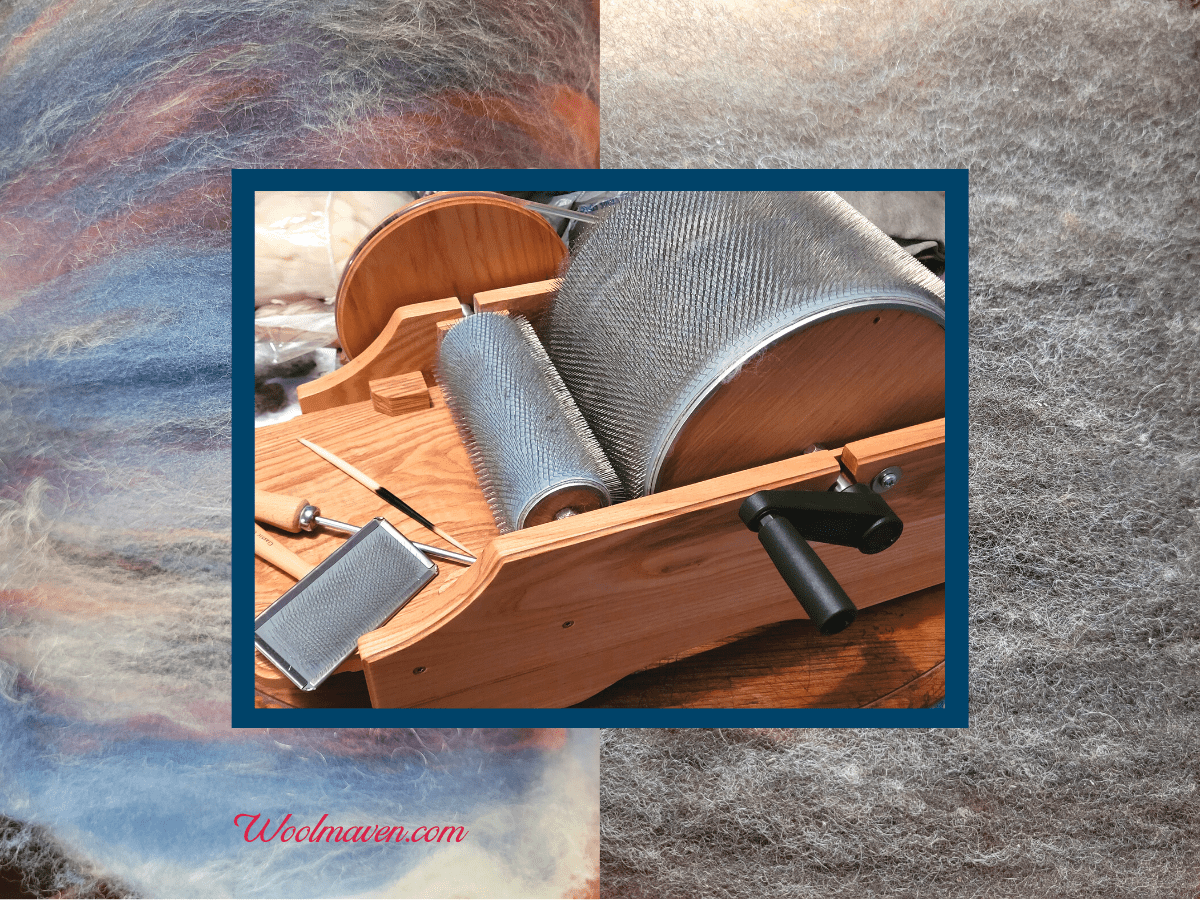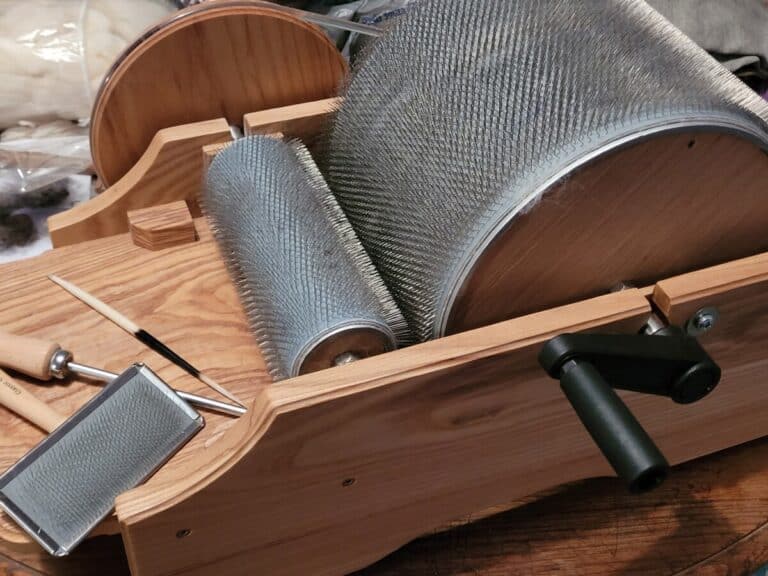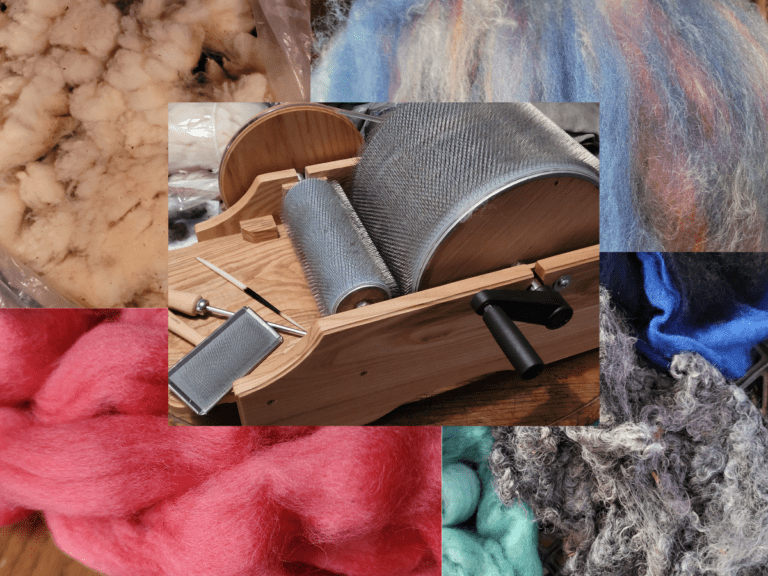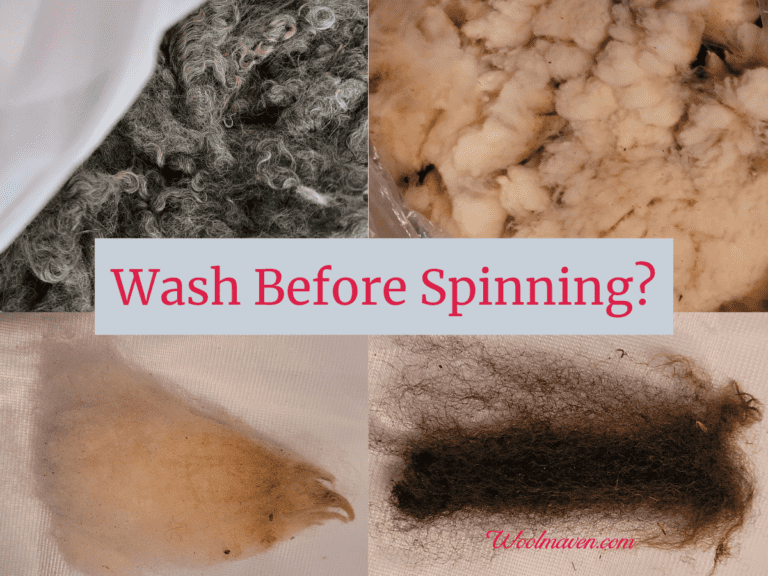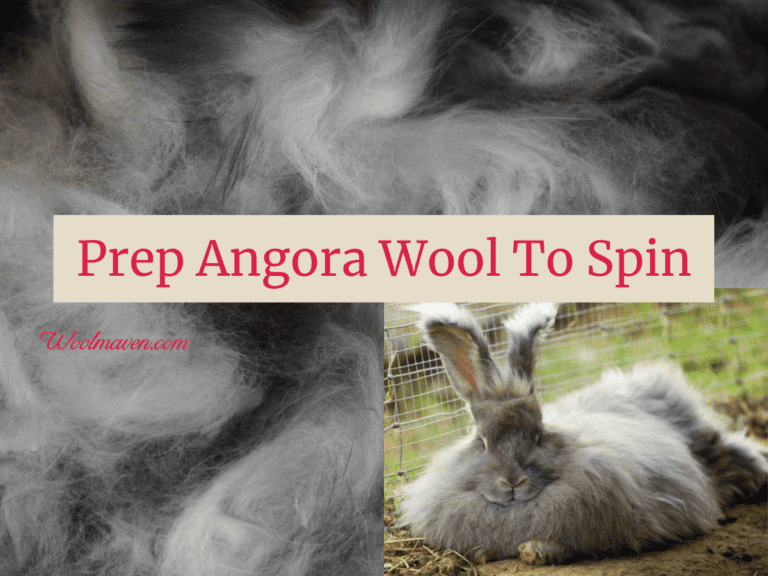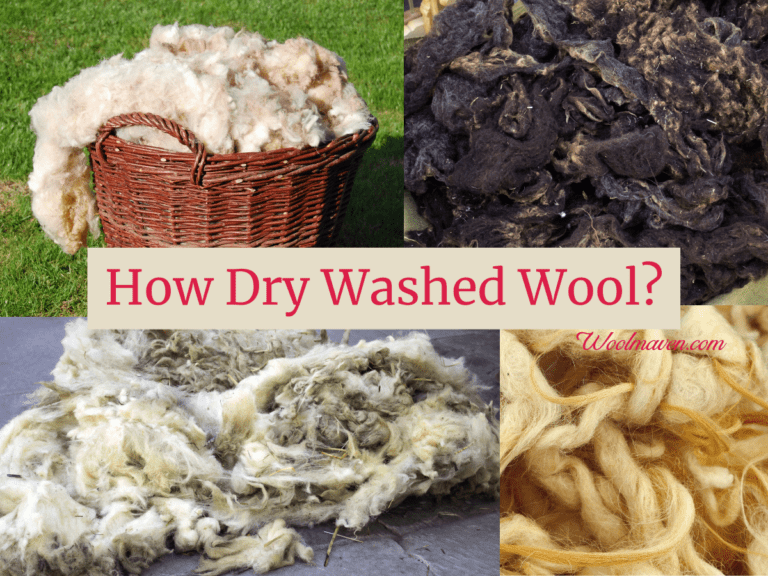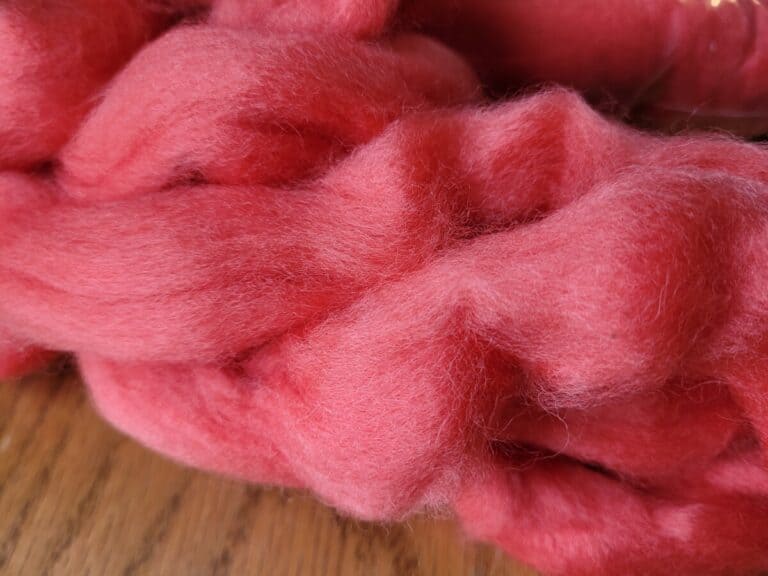What Does A Drum Carder Do That’s So Special?
Thinking about getting a drum carder to make your fiber preparation go a little easier? What makes a drum carder so special, especially since there are other ways to prepare your fiber for spinning?
Drum carders are fast and easy to use carders that make larger batts of spinning or felting fiber. Drum carders can card fibers of variable length and fineness, in addition to blending colors or making ready to spin patterned (striped, gradient) batts.
I put off getting a drum carder for ages, but now that I have it, I love this thing and can’t imagine going without.
Well, that’s not exactly true, I can imagine it, since I used to card everything by hand. It took forever and I definitely don’t want to go back!
Is A Drum Carder Worth It? goes over the costs and benefits of getting a drum carder for preparing your spinning fiber.
New to spinning and want some help? Try my Beginning Spinner Course, it has simple, step by step instructions and is designed to take you from beginner to confident spinner!
This post contains affiliate links, which means I receive commissions if you choose to purchase through links I provide (at no extra cost to you).
Drum carders are specialist fiber carders
Drum carders are a special type of wool (or other spinning or felting fiber) carder.
Drum carders have the ability to card larger amounts of wool more quickly than any other method available to a wool crafter who wants to card fiber at home.
In addition to carding, drum carders can also be used to make blends and specific colorations to the spinnable fiber that would be hard or very time consuming to make, otherwise.
For me, using a drum carder has made preparing spinnable fiber fast and easy! I can make all of the lovely blends and patterns I want, it’s wonderful!
Consider the Ashford Drum Carder, it’s the one I recommend to anyone looking to get a great drum carder that is versatile and easy to use.
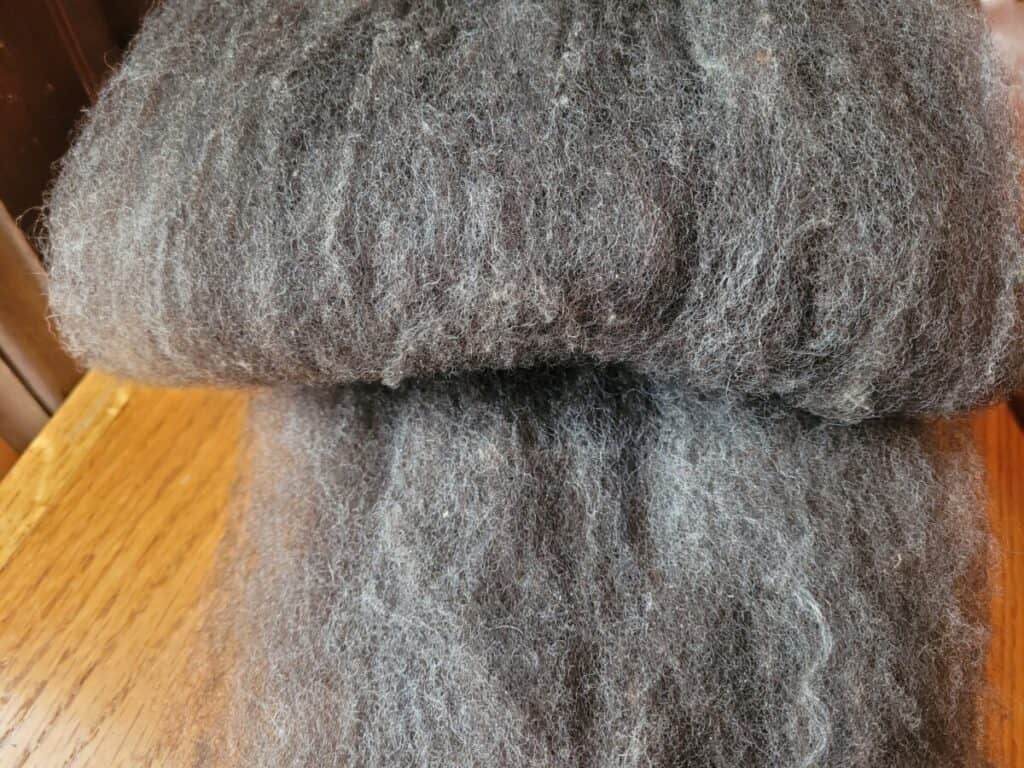
Drum carders card quickly
Drum carders card wool much more quickly than hand carders. Making a batt large enough for your entire project is easy and quick.
How quick you can make a batt and how large of a batt you can make will vary with the different carders and what fibers you are carding.
Drum carders have variable capacity, which depends on the size of the drum and length of the teeth in the carding cloth.
Not so surprisingly, bigger drums and longer teeth have higher capacity per batt.
I do have to say that a hard to work with fiber, like something that is really fine and fly away will still be more challenging to work with on a drum carder, which will take more time.
Fibers like angora rabbit or the finer grades of mohair will still be a bit wiley, whether you hand or drum card.
A drum carder will not fix all of your fiber challenges, it’s not magic, but it is pretty close!
Pros And Cons Of Drum Carders vs Hand Carding goes into specifics of which carding tools work best for which situation, to help you pick the carding method that suits you and your projects.
Drum carders card larger amounts
Drum carders card larger amounts of fiber at a time.
I am still in awe of how quickly I can make a nice batt or two for my next project, especially compared to how long it used to take me with the hand cards!
I do have to qualify this larger amount statement with two points:
- you need to pack the fiber with a brush
- you need to feed the fiber in slowly and in small amounts
As much as I love my drum carder, I’ll admit there are some limits to what it can do, mainly in regards to how you get to the results you want.
To get the larger amounts of fiber per batt, you’ll need to use a brush of some sort to pack down the fibers on the drum.
This can be a little hand held brush that looks like a dog brush or it can be a brush that sits on the carder and packs as the swift (big drum) turns.
Depending upon what I’m working with, I’ll use one brush or the other and maybe a combination of both.
The other part folks miss about a drum carder is that, yes, you can card a lot of fiber per batt, but you can not put a lot of fiber onto the drum at once!
New to spinning and want some help? Try my Beginning Spinner Course, it has simple, step by step instructions and is designed to take you from beginner to confident spinner!
You must add the fiber in small amounts and build up layers on the swift. Putting a big blob of fiber through your drum carder is hard on the carder and the teeth.
Not to mention, you won’t get the nicely carded and well blended batt that you are looking for.
To get a well carded batt, you have to put the fiber on in light layers.
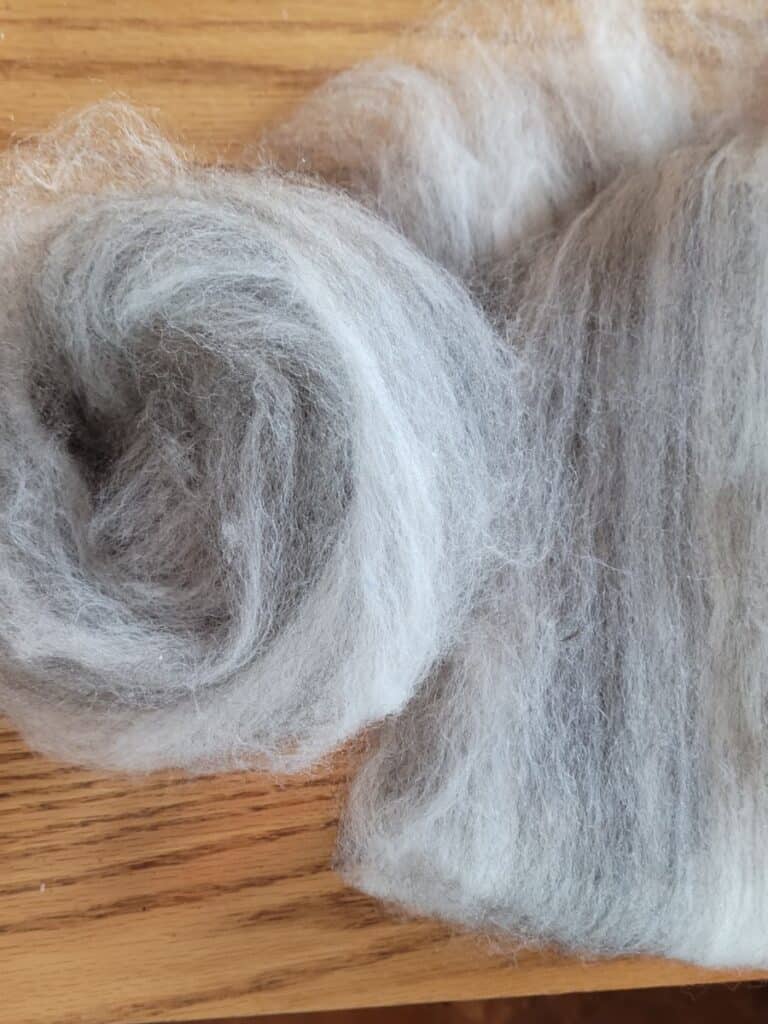
Drum carders blend fibers
Drum carders are all star fiber blenders! You can put all manner of different fibers together on a drum carder and they will be incorporated into your batt!
If you have any fiber blending experience, you’ll know that there are two challenges here: even blend and differing fiber lengths.
Drum carders evenly blend your fibers, so that you can make one or two batts for your project, rather than scads of small batts from your hand cards.
If you are making a basic batt, meaning you are just carding one fiber, this is not a big deal, if you are willing to put in the time to use the hand cards.
If you are making a color or different fibers blend, things change. It’s much easier to repeat your results on a drum carder.
The other place where drum carders shine for fiber blending is when the fibers are of different lengths. This really isn’t a big deal to the drum carder.
Of course, you can blend on hand cards, it is just the reoccurring small batt issue.
And, you could use a hackle to blend your fibers, but only if the fibers are the same length! That’s the catch.
I enjoy using my hackle, for sure! However, I end up a bit frustrated sometimes when I have the colors I want but not in the lengths I need for the hackle to work.
This is not an issue with the drum carder.
If you have a bigger fiber selection than I do or you have decided to work with one wool only, meaning all of the fibers will be close to the same length, then this isn’t that big of a deal for you!
Drum carders have options
Drum carders have options, mainly teeth per inch and drum size.
Once you get to looking into getting a drum carder, you’ll realize that they vary in both batt size and width and the type of fibers that it can card.
Drum carders vary in fiber they can card
There are different types of carding cloth for drum carders, based on tpi (teeth per inch), with more teeth needed for finer fibers.
My drum carder has a mid range carding cloth, meaning it will work for just about anything, fiber wise.
If you are a fine wool specialist, then you’d want to go with a drum that is specifically for fine wools. The same is true for a long or coarser wool specialist.
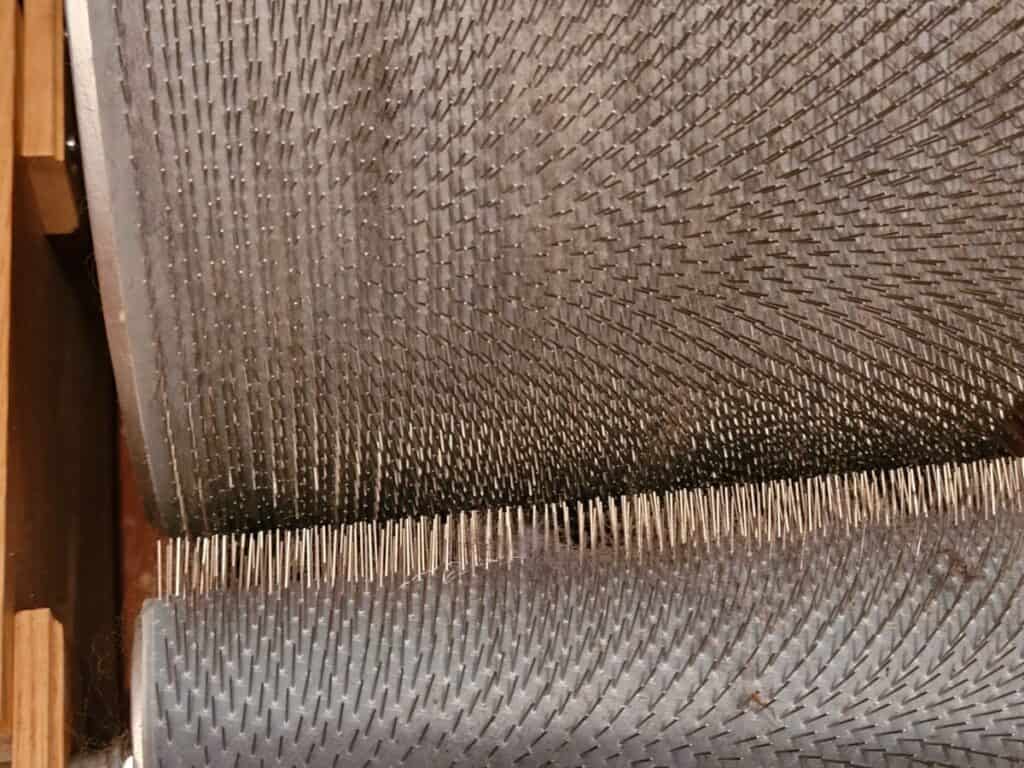
Drum carders come in different sizes
There are also different sized drums for drum carders, in both the width and the length of the batt they are able to card.
Some of the art batt drum carders have a thinner drum that can work with more unusual fiber additions like locks or bits of yarn.
Other drum carders have a wide drum that makes more of a fat rectangle batt.
Mine is a jumbo carder, meaning it has a normal size drum but the teeth are longer, so the batt can be thicker and heavier than batts from a standard drum.
Pick the size that suits you and know that for many of the carders, you can order an additional drum, for example a fine tpi and a medium tpi, if you want to have a variety of carding options.
Drum carder alternatives
There are a few drum carder alternatives, but to be blunt, none are even close to as good as a drum carder.
But, so that you can decide for yourself which carding method is best for you, you can also card with hand carders, flick carders and blend with a blending board.
The hand cards that I use are Clemes & Clemes Curved Back Wool Cards. I’ve had them for almost 20 years and use them for all of my hand carding.
Both the hand cards and the flick cards are slower and make much smaller amounts of ready to spin fiber at a time.
A blending board is not for carding, but blending colors or fibers (as you may have guessed from the name!)
Using a blending board instead of a drum carder would give you a way to blend smaller amounts of fiber fairly quickly for less initial equipment cost.
The real plus of a blending board is that you can make your own, as well.
As mentioned above, the blending board is for blending, not carding, which will be fine for anyone who works with well prepared fibers like combed top.
Drum carder cons
There are a few less great aspects of a drum carder. Here are a few that I am aware of:
- more expensive than hand cards or combs
- do not work well with small batches
- fiber must be carded in light layers
Drum carders are more expensive than other carding or combing equipment, there’s no two ways about it.
Drum carders are really not worth your time if you are doing small test batches of fiber.
You can easily card small amounts of fiber, but it’s harder to get those small amounts off of the drum than it is to doff (remove) a larger batt.
Drum carders must be fed small amounts of fiber at a time, which is really the same for all carding. This is not so much a con as a reminder!
AuntJenny.com has an interesting article on Which Carding Option Is Right For Me? that has a nice chart at the bottom showing which tpi you’d want to use, depending upon which wools you tend to work with the most.
New to spinning and want some help? Try my Beginning Spinner Course, it has simple, step by step instructions and is designed to take you from beginner to confident spinner!

